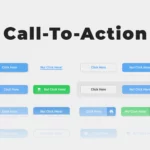Website navigation plays a crucial role in user experience and engagement. Effective navigation helps users quickly find what they’re looking for, understand the website’s structure, and achieve their goals. Poor navigation can lead to user frustration, increased bounce rates, and lost conversions. In this article, we’ll explore tips and strategies for improving website navigation to create a seamless and intuitive user experience.
1. Keep It Simple and Intuitive
Simplicity is key to effective navigation. Keep the navigation structure straightforward, using clear labels and logical grouping. Avoid overly complex menus or jargon that could confuse users. Aim for a clean design with easily recognizable icons and text.
2. Use Consistent Navigation
Maintain consistency in navigation elements across different pages of the website. Users should be able to rely on a predictable and familiar navigation experience. Keep the menu in the same location on every page and use the same style for navigation elements.
3. Prioritize Important Links
Place the most important links prominently in your navigation. These could include links to the homepage, product pages, contact information, or other high-traffic areas. Prioritizing key links ensures that users can quickly access the most relevant content.
4. Implement Responsive Navigation
With the growing use of mobile devices, responsive navigation is essential. Design your navigation to adapt to different screen sizes, such as by using collapsible menus, hamburger menus, or responsive navigation bars. This ensures a seamless user experience across devices.
5. Use Descriptive Labels
Clear and descriptive labels help users understand where links will take them. Avoid vague terms or jargon, and use language that aligns with user expectations. Consistent and meaningful labeling enhances navigation clarity.
6. Provide a Search Function
A search function allows users to quickly find specific content on your website. Place the search bar prominently in the header or other accessible location. Use autocomplete and suggestive search features to improve the user experience.
7. Organize Content Hierarchically
Organize content in a logical hierarchy, grouping related items together. Use categories and subcategories to help users navigate large websites with many sections. Clear organization aids in discoverability and user satisfaction.
8. Consider Breadcrumbs
Breadcrumbs are a navigation aid that helps users understand their current location within the website’s hierarchy. They also provide a quick way to navigate back to previous pages. Use breadcrumbs when appropriate, especially on large websites.
9. Test and Iterate
Regularly test your website’s navigation with real users to identify areas for improvement. Conduct usability testing to understand how users interact with your navigation and where they may encounter issues. Use analytics to track user behavior and adjust navigation based on data-driven insights.
10. Stay Up to Date with Navigation Trends
Stay informed about the latest trends in website navigation and user interface design. Experiment with new navigation techniques and tools while keeping in mind the importance of simplicity and user-friendliness.
Conclusion
Improving website navigation is an ongoing process that requires careful consideration of user needs and behavior. By keeping navigation simple, consistent, and intuitive, you can create a user-friendly experience that helps visitors find the content they need and achieve their goals. Regular testing and iteration will ensure that your navigation remains effective as your website evolves and grows. Prioritize accessibility and responsiveness to cater to users on different devices and screen sizes. By doing so, you’ll enhance user satisfaction and boost engagement with your website.


